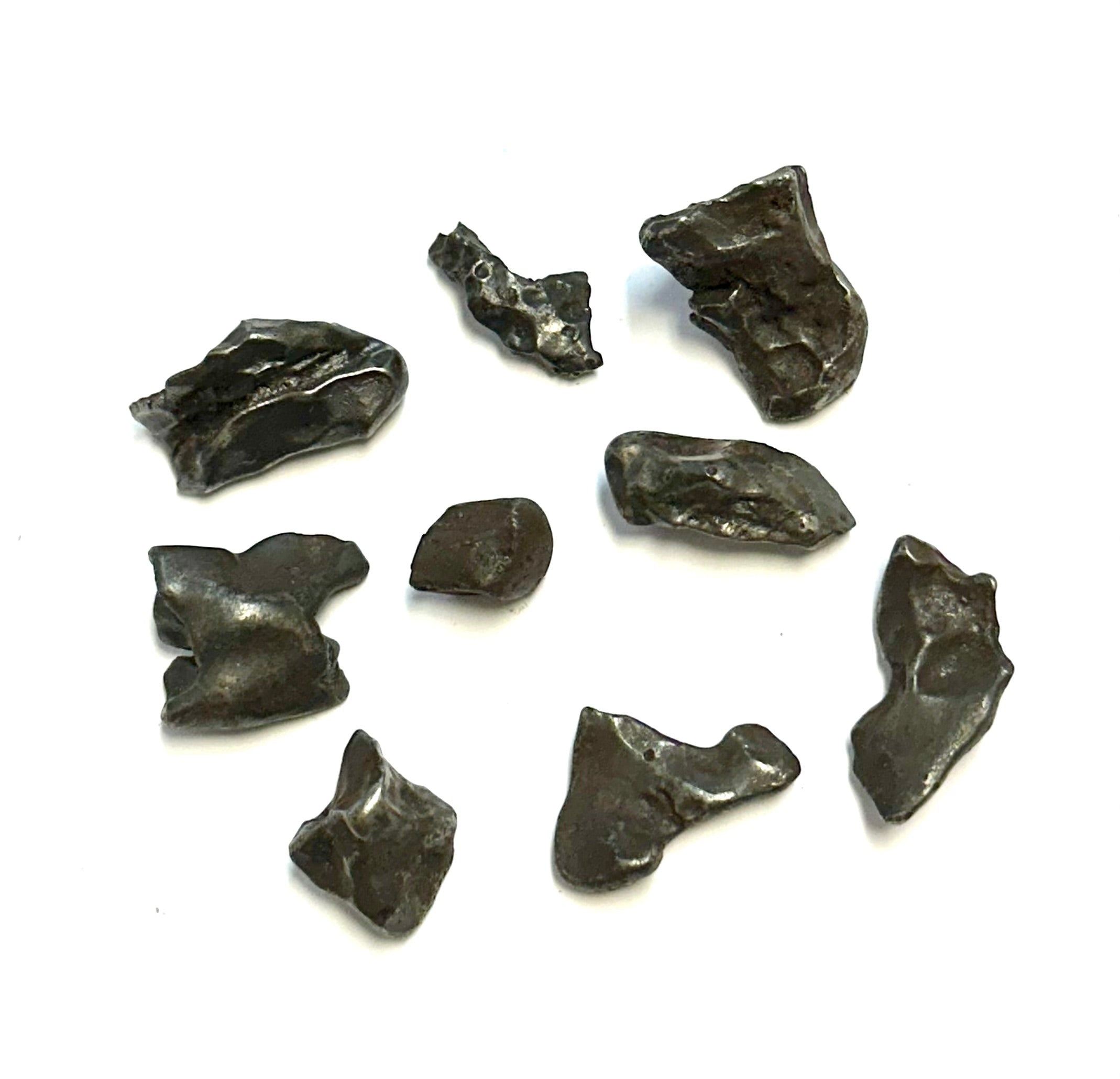Sikhote-Alin Certificated iron meteorite with certificate space gift for scientists store museum quality collectibles School laboratory space gift
SIKHOTE-ALIN METEORITE
SKL 0031
This specimen is about 20x14x10mm store weight 10,67 g.
Meteorite with stand.
The Sikhote-Alin is a mountain range in Primorsky and Khabarovsk Krais, Russia, extending about 900 kilometres (560 mi) to the northeast of the Russian Pacific seaport of Vladivostok.
An iron meteorite fell on the Sikhote-Alin Mountains, in southeastern Russia, in 1947. Large iron meteorite falls have been witnessed and fragments recovered but never before, in recorded history, a fall of this magnitude. An estimated 23 tonnes of fragments survived the fiery passage through the atmosphere and reached the Earth.
Composition:
93% Fe, 5.9% Ni, 0.42% Co, 0.46% P, 0.28% S
Impact:
At around 10:30 on 12 February 1947, eyewitnesses in the Sikhote-Alin Mountains, Primorye, Soviet Union, observed a large bolide brighter than the sun that came out of the north and descended at an angle of about 41 degrees. The bright flash and the deafening sound of the fall were observed for 300 kilometres (190 mi) around the point of impact not far from Luchegorsk and approximately 440 km (270 mi) northeast of Vladivostok. A smoke trail, estimated at 32 km (20 mi) long, remained in the sky for several hours.
As the meteor, traveling at a speed of about 14 km/s (8.7 mi/s), entered the atmosphere, it began to break apart, and the fragments fell together. At an altitude of about 5.6 km (3.5 mi), the largest mass apparently broke up in a violent explosion called an air burst.
On November 20, 1957 the Soviet Union issued a stamp for the 10th anniversary of the Sikhote-Alin meteorite shower. It reproduces a painting by P. I. Medvedev, a Soviet artist who witnessed the fall: he was sitting in his window starting a sketch when the fireball appeared, so he immediately began drawing what he saw.



